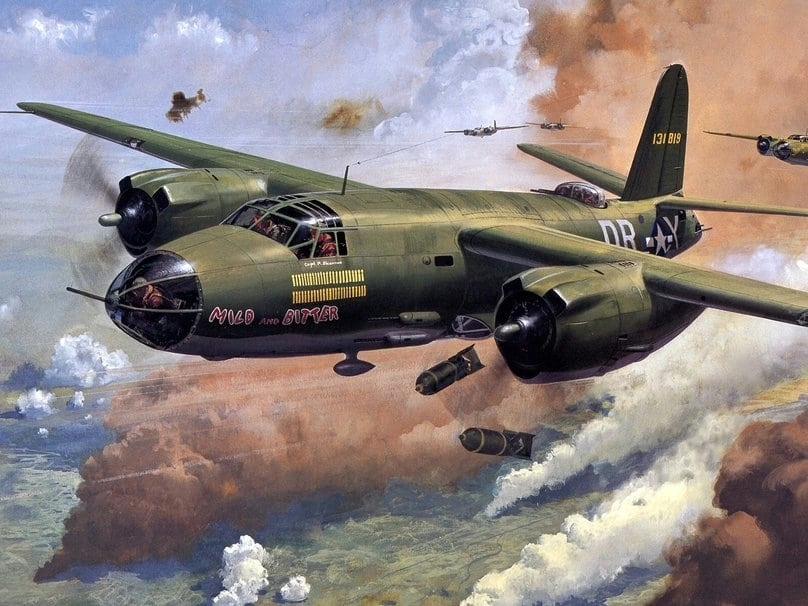Martin B-26 Marauder History
In addition to its impressive record as a warplane, the Martin B-26 Marauder should be considered an historic US Army design for another reason: it was the first warplane ever to be ordered into mass production ”right off the drawing board” without having a prototype tested first. In January 1939, the US Army, foreseeing an immediate need for new, high-performance airplanes, asked proposals from the aircraft industry for a new medium bomber that would have an unprecedented high speed for the industry and carry five crew men, four .30-calibre machine guns and 2,000 pounds of bombs. By omitting requirements for low-speed handling characteristics, the Army implied that it was willing to accept a “hot” airplane to get the desired top end performance. The Glenn L. Martin Co. submitted its paper Model 179 on July 5, 1939. After evaluating it against other proposals, the Army awarded Martin a contract for 201 bombers and designated them “B-26.”
Martin B-26 Marauder – First flown on November 25, 1940, the new B-26 was powered with 1,850 hp Pratt & Whitney R-2800-5 engines. Its initial armament was a single flexible, .30-calibre machine gun in the nose another in a manned tail position, and two .50 calibre guns in a powered, Martin-designed dorsal turret – the first such device to be installed in a US bomber. The B-26 was also the first US warplane to have been designed from the start with self-sealing fuel tanks. The bomb load was 4,800 pounds.
A wingspan of only 65 feet with an area of 602 square feet combined with the 32,000-pound gross weight to create the highest wing loading ever used on Army airplane to that time. This horrified pilots – and time was to justify their fears. The early models used for crew training soon earned the nickname “Widow Maker”, and they almost lived up to the derisive reference “One a Day in Tampa Bay” at a Florida training centre.
One hundred and thirty-nine B-26As made their operational debut from the Australian bases in the spring of 1942. The Martin B-26 Marauder also appeared in action from Alaskan and North African bases. Then followed the B-26B, with upgraded engines and increased armament. Of the one thousand eight hundred and eighty-three built, all but the first six hundred and forty-one B-26Bs also introduced a new, extended-span wing and taller tail. The B-26B made its operational debut in Europe in May 1943, subsequently becoming one of the hardest-worked Allied medium bombers in this theatre.
One thousand two hundred and ten B-26Cs were built, essentially similar to the B models. These were succeeded by the B-26Fs (three hundred built), in which the wing incidence was increased with the purpose of increasing performance and reducing the accident rate. The final Martin B-26 Marauder model was the B-26G, which differed only slightly from the F.









